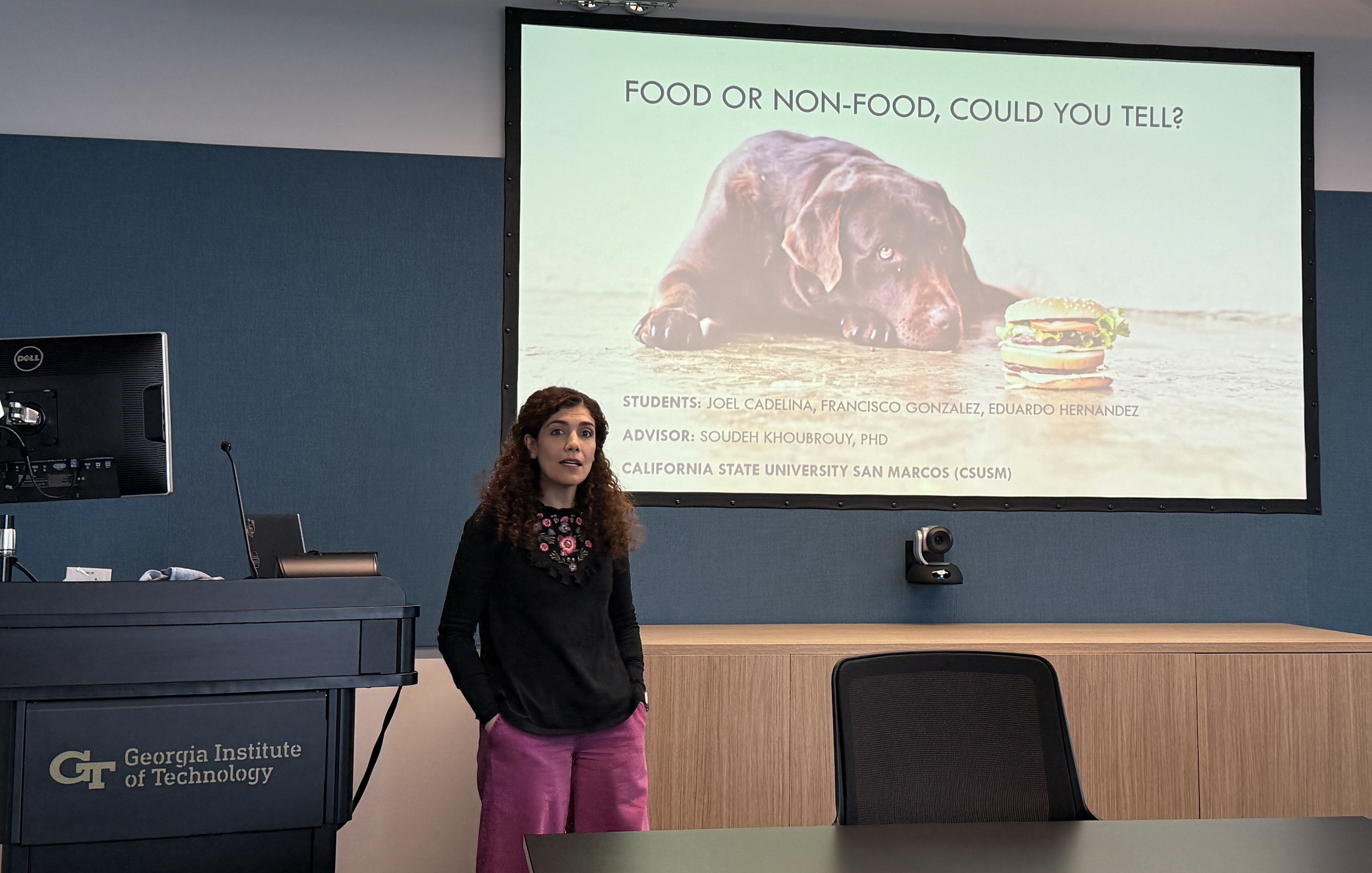The U. S. National Science Foundation AI4OPT Faculty Training Program is fostering groundbreaking work that bridges disciplines, borders and industries. Two recent projects, one decoding brainwaves to control robotic devices, the other building an AI education ecosystem in Chile, demonstrate how the program empowers faculty to transform ideas into real world impact.
Decoding Thought to Movement
Soudeh Khoubrouy, assistant professor of electrical engineering at California State University San Marcos, uses her AI4OPT experience to expand her neuroscience and engineering research. During the 2024–2025 academic year, she supervised a senior design project applying electroencephalography (EEG) and machine learning to classify brain responses to visual stimuli.
“We developed a signal processing pipeline to distinguish between brainwave patterns associated with food and non-food images,” she said. “EEG data was collected, in our research lab, using a CGX Quick-32r dry-electrode headset, and processed through MATLAB and the EEGLAB toolbox. Preprocessing steps included filtering and artifact removal via Independent Component Analysis (ICA). We employed Discrete Wavelet Transform (DWT) for time-frequency feature extraction, followed by ANOVA to pick out the most effective features. A Cubic Support Vector Machine (SVM) classifier trained on the refined features achieved a classification accuracy of 76.2%, demonstrating the feasibility of decoding visual intent from neural signals.”
Khoubrouy is now building on that work to control a Quanser robotic arm using EEG signals, with the goal of creating brain-computer interface systems to help individuals with paralysis operate assistive devices through thought alone.
Building an AI-Ready Region
In northern Chile, Carlos Olivos Matus, assistant professor of industrial engineering at Universidad Católica del Norte, is leading the education strategy for the newly launched Center for Artificial Intelligence of the Antofagasta Region. The center, funded by the Regional Government of Antofagasta, aims to transform the mining dependent region into an AI innovation hub.
“Over the next two years, the center will train 400 people in AI, including 360 school students and 40 professionals, support 5 R&D+i projects, and help launch 3 AI-based startups,” Olivos Matus said.
The initiative is organized around five strategic thrusts: infrastructure, education, outreach, applied research, and entrepreneurship. Olivos Matus’ work is focused on introducing AI concepts at the school level.
“This idea of AI in schools was motivated after my first year at AI4OPT,” he said. “Without that support, I would not have had that idea.”
By assessing knowledge levels, developing workshops, and ensuring early exposure to AI, Olivos Matus is working to give students a head start in a rapidly evolving field, ultimately strengthening the region’s economic resilience and competitiveness.
Global Reach, Local Impact
From neural signal decoding in California to AI education pipelines in Chile, AI4OPT’s Faculty Training Program is equipping researchers to pioneer projects with both immediate and long-term societal benefits. By combining advanced technical expertise with a commitment to applied impact, these faculty members are shaping the future of AI-driven innovation worldwide.

